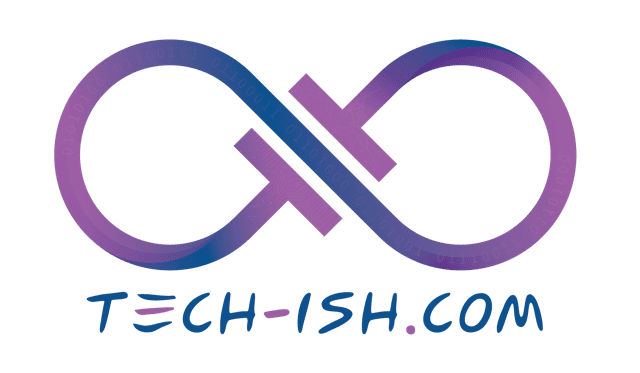Introduction
Kenya’s higher education funding landscape is undergoing a significant transformation. The KCSE 2023 cohort is at the forefront of this change, as they receive new admission letters to universities under a revised funding model. This model, introduced in 2023, departs from the traditional blanket funding approach, requiring students to apply for financial aid that is tailored to their specific needs.
The shift has sparked widespread debate, with concerns over its fairness, implementation challenges, and potential impact on students from low-income households. This comprehensive article serves as a resource for understanding every aspect of this new system, from its history and rationale to the application process, funding bands, and the arguments for and against it.
A Brief History: From Blanket Funding to Means Testing
For decades, Kenya’s university funding model was straightforward: any student scoring C+ or higher in the KCSE exams automatically received government funding. This model aimed to promote equity and access to higher education, ensuring that a university education was within reach for students across the socio-economic spectrum. However, as student numbers grew and state revenues declined, the system became increasingly unsustainable.
Public universities began to accrue significant debts—exceeding USD 110 million by 2020—due to the government’s inability to keep up with funding demands. In response to this crisis, the government introduced a new funding model in 2023 under the administration of President William Ruto. The model sought to ensure the financial sustainability of universities while still promoting access to higher education, especially for students from disadvantaged backgrounds.
Understanding the New University Funding Model
The new university funding model is based on the concept of “means testing,” where financial support is determined by a student’s specific financial situation. This represents a significant departure from the previous system, where all students who met the academic threshold received government funding regardless of their financial background.
Key Components of the Model:
- Scholarships: These are grants provided by the Universities Fund that do not require repayment. Scholarships are awarded based on need, with the amount varying according to the student’s financial circumstances.
- Loans: Administered by the Higher Education Loans Board (HELB), these loans cover tuition fees and living expenses. They are repayable upon graduation and accrue interest at a rate of 4% per annum.
- Household Contributions: This is the portion of university fees that parents or guardians are expected to cover, determined based on their financial capacity.
The introduction of this model was part of a broader strategy to address the financial difficulties faced by Kenya’s public universities, which had been exacerbated by a growing student population and decreasing government subsidies.
The University Funding Bands: Categorizing Students by Need
The most critical aspect of the new university funding model is the categorization of students into five funding bands based on their financial need. These bands are designed to ensure that financial aid is distributed equitably, with students from the most disadvantaged backgrounds receiving the highest level of support. Here’s a detailed explanation of each band:
Band 1 (Most Needy):
Band 1 is reserved for students from the most financially disadvantaged backgrounds. These students may come from households with minimal income, significant financial burdens, or other socio-economic challenges that make it difficult to afford higher education. The high level of government support ensures that these students can pursue their studies with minimal financial strain.
- Government Support: 95% of the total university costs are covered by government funding.
- Breakdown: This funding is split into 70% scholarships and 25% loans.
- Household Contribution: Families in this category are only required to contribute 5% of the total university costs.
- Upkeep: Students receive an annual upkeep allowance of KES 60,000 to help cover living expenses.
Band 2:
Band 2 is designed for students from families with moderate financial difficulties. While these families may have some financial resources, they still require significant assistance to manage the costs of university education. The government covers most of the expenses, easing the burden on these families.
- Government Support: 90% of the total university costs are covered by government funding.
- Breakdown: The funding is divided into 60% scholarships and 30% loans.
- Household Contribution: Families in this band are expected to contribute 10% of the total university costs.
- Upkeep: Students receive an annual upkeep allowance of KES 55,000.
Band 3:
Band 3 caters to students from families with a slightly higher financial capacity but who still require considerable assistance to afford university. These families can shoulder more of the financial responsibility, but the government still plays a significant role in subsidizing the costs.
- Government Support: 80% of the total university costs are covered by government funding.
- Breakdown: This funding is split into 50% scholarships and 30% loans.
- Household Contribution: Families in this category contribute 20% of the total university costs.
- Upkeep: Students receive an annual upkeep allowance of KES 50,000.
Band 4:
Band 4 is intended for students from middle-income families who have a greater ability to contribute towards their education costs. Although the government provides substantial support, these families are expected to take on a more significant share of the financial responsibility.
- Government Support: 70% of the total university costs are covered by government funding.
- Breakdown: The funding consists of 40% scholarships and 30% loans.
- Household Contribution: Families are required to contribute 30% of the total university costs.
- Upkeep: Students receive an annual upkeep allowance of KES 45,000.
Band 5 (Least Needy):
Band 5 is for students from more affluent families who have the financial capacity to cover a significant portion of university costs. The government still provides some support, recognizing that even wealthier families may face financial challenges, but the expectation is that these families will bear the bulk of the financial burden.
- Government Support: 60% of the total university costs are covered by government funding.
- Breakdown: This funding is evenly split between 30% scholarships and 30% loans.
- Household Contribution: Families in this band are expected to contribute 40% of the total university costs.
- Upkeep: Students receive an annual upkeep allowance of KES 40,000.
Table: The University Funding Model, Every Band and it’s figures:
| Band | Gov. Support | Scholarship | Loan | Household Contribution | Upkeep (KES) |
|---|---|---|---|---|---|
| Band 1 | 95% | 70% | 25% | 5% | 60,000 |
| Band 2 | 90% | 60% | 30% | 10% | 55,000 |
| Band 3 | 80% | 50% | 30% | 20% | 50,000 |
| Band 4 | 70% | 40% | 30% | 30% | 45,000 |
| Band 5 | 60% | 30% | 30% | 40% | 40,000 |
How the University Funding Band Categorization Works:
The process of placing students into these bands is based on a detailed assessment of their financial situation, using the Means Testing Instrument (MTI). The MTI considers various factors, including:
- Family Economic Background: This includes household income, financial assets, and other indicators of financial stability.
- Socio-Demographic Factors: These factors may include the number of dependents in the household, the presence of any disabilities, and other considerations that might affect a family’s financial situation.
- Affirmative Action: Special considerations are given to students from marginalized communities, orphans, and those with disabilities.
- Family Education Expenditures: This considers the number of children in the family who are also in school or university, which can place additional financial strain on the household.
The goal of this system is to ensure that the students who need the most help receive the most support, while those who can afford to contribute more are asked to do so. However, the accuracy and fairness of the MTI have been a topic of debate, with some arguing that the system does not always reflect the true financial situation of families.
The Application Process: How to Secure University Funding
To benefit from the new university funding model, students must go through a detailed application process. The government has emphasized the importance of accuracy and transparency in this process to ensure that students are categorized correctly.
- Eligibility: The new funding model is available to students from the 2022 and 2023 KCSE cohorts. This eligibility also extends to those entering Technical and Vocational Education and Training (TVET) institutions. It is expected to be the new funding model going forward.
- Online Application: Applications are made through the Higher Education Financing Portal (www.hef.co.ke). Students must provide comprehensive information about their household’s financial situation, including income, family size, and any special circumstances such as disability or being an orphan. The application process was opened in June 2024, with a deadline of August 15, 2024.
- Validation and Categorization: The information submitted by students is validated by the Ministry of Education, which then uses the Means Testing Instrument (MTI) to categorize students into one of the five funding bands. The MTI considers multiple factors, including family economic background, social-demographic data, and any affirmative action criteria.
- Issuance of New Admission Letters: Based on the funding band assigned, students receive new admission letters from their respective universities. These letters outline the exact amounts of scholarships, loans, and household contributions required.
- Appeals Process: Students who believe they have been incorrectly categorized can appeal the decision through the Higher Education Portal. They can provide additional information to support their case, and the Ministry has committed to reviewing these appeals promptly.
New Admission Letters: What’s Changed?
In August 2024, in response to widespread criticism, the government directed universities to withdraw previously issued admission letters, which had been criticized for reflecting unaffordable fee amounts. The new letters, issued in line with the revised funding model, provide a clearer and more accurate representation of the financial obligations for each student’s family.
Key Changes in the New Letters:
- Revised Fee Structures: The new letters provide fee structures that align with what families can realistically afford, based on the funding band assigned to the student.
- Detailed Financial Breakdown: Each letter includes a detailed breakdown of how much will be covered by scholarships, loans, and household contributions.
- Secure Placements: The Ministry of Education has assured students that their placements in academic programs are secure and unchanged, despite the revised fee structures.
Debates and Criticisms: A Divided Opinion
The introduction of the new university funding model has sparked significant debate and criticism. While the government and some education stakeholders view it as a necessary reform, others have expressed concerns about its fairness and potential impact on access to higher education for students from disadvantaged backgrounds.
Arguments For the New Model:
- Sustainability: Proponents argue that the model is essential for ensuring the financial sustainability of Kenya’s public universities. By aligning funding with actual needs, it prevents the overextension of resources and reduces the risk of universities accumulating unsustainable debt.
- Equity: The model’s focus on need-based funding is seen as a step towards greater equity in higher education. By providing more support to those who need it most, the model aims to level the playing field for students from diverse socio-economic backgrounds.
- Efficiency: By tailoring financial aid to individual circumstances, the model is designed to use resources more efficiently, reducing wastage and ensuring that funding goes to where it is most needed.
Arguments Against the New Model:
- Complexity and Accessibility: Critics argue that the application process is overly complex, which may disadvantage students from less privileged backgrounds who lack the resources or knowledge to navigate it effectively.
- Potential for Misclassification: There have been reports of inaccuracies in the categorization process, leading to concerns that some students may be misclassified and therefore either underfunded or overburdened with financial obligations.
- Exclusion of the Poor: Despite the model’s intentions, there is concern that it could inadvertently exclude students from the poorest households, especially if their financial circumstances are not accurately assessed or if they face barriers in accessing the application process.
Complications and Challenges in Implementation
The rollout of the new university funding model has not been without its challenges. From technical glitches in the application portal to confusion over the categorization process, students and parents have faced several hurdles.
- Technical Issues: The application process experienced technical difficulties, with some students unable to access the Higher Education Financing Portal. These issues led to frustration and delays in the application process.
- Categorization Confusion: The Means Testing Instrument (MTI) used to categorize students has been a source of controversy. Lawmakers and stakeholders have questioned its accuracy, citing cases where students from wealthy backgrounds were categorized as vulnerable, while those from genuinely needy backgrounds were classified as less needy.
- Public Outcry: The initial admission letters issued in 2024 faced significant backlash for indicating fee amounts that many parents found unaffordable. This led to protests and calls for the government to revise the model, resulting in the issuance of new letters with more reasonable fee structures.
The Path Forward: Addressing Challenges
As the new university funding model continues to be implemented, there are several key areas where improvements are needed to ensure its success:
- Refining the Means Testing Instrument: The government needs to ensure that the MTI is accurate and reliable, preventing cases of misclassification and ensuring that university funding is allocated fairly.
- Simplifying the Application Process: Efforts should be made to make the application process more user-friendly, particularly for students from disadvantaged backgrounds who may struggle with the current system.
- Improving Transparency and Communication: Clear communication from the Ministry of Education and universities is crucial to prevent confusion and build trust in the system. Regular updates and guidance should be provided to students and parents throughout the process.
- Monitoring and Evaluation: Continuous monitoring and evaluation of the model’s impact will be essential to making necessary adjustments and improvements. The government should establish mechanisms for gathering feedback from students, parents, and educational institutions.
Conclusion
The introduction of the new university funding model represents a significant shift in how higher education is financed in Kenya. While it offers the potential for greater equity and sustainability, its success will depend on effective implementation and the government’s ability to address the challenges that have emerged. For the KCSE 2023 cohort, understanding the intricacies of this model is crucial as they navigate their journey into higher education.








How to know the band being placed